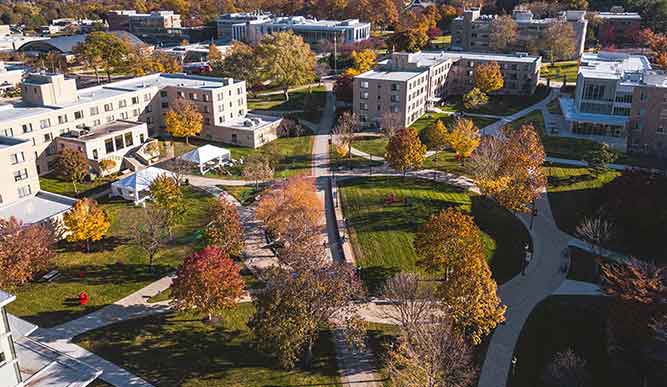In 2009, Fairfield completed construction on an environmentally friendly home for the Jesuit community and a gathering place for spiritual direction, retreats, meetings and entertaining. The Jesuit Community Center boasts many energy-saving features, including a sod roof, with grass over the main portion of the house, that filters storm water, reduces heat loss, and keeps the building cool in the summer. The large windows in the house direct sunlight onto the dark concrete floors, using solar energy to radiate warmth through the interior. In addition, many recycled materials were used for the building's surfaces. Interior and exterior walls are also well insulated, saving energy, but also preserving a quiet atmosphere appropriate for contemplation.
The most dramatic energy-saving dimension to the new Center is the "closed loop" geothermal heating system, which provides heat in winter and cools the building in the summer based on the naturally stable temperature of the earth 400 feet below the surface. 15 "wells" have been drilled around the building, and in each well are pipes - interconnected through a closed loop network - filled with a combination of water and a non-toxic anti-freeze solution. Pumps in the house push the liquid out of the building and down into the pipes in the wells before the liquid is circulated back into the house.
In New England, the earth at a depth of 400 feet remains at a stable temperature between 50 and 60 degrees Fahrenheit. The heat pump in the building uses the temperature differential between the liquid in the loop and the ambient exterior air temperature to create heat in the winter and cooling in the summer.
The "close loop" geothermal system could save as much as half of the energy that the building would otherwise consume.


